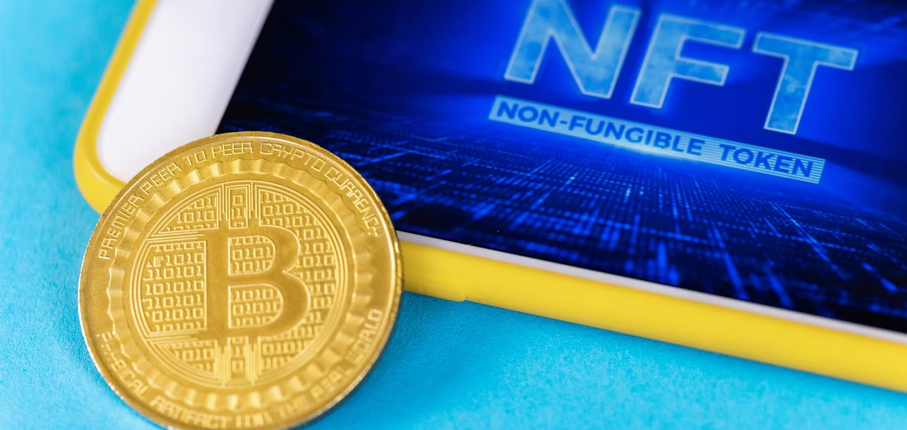Publishers insightfully anticipate a swift and ongoing diversification in generating revenue. The WPT Outlook Survey 2022-23, suggests that integrating new revenue sources will assume an even more substantial role, providing valuable insights into the evolving landscape of their publishing revenue structures.
Today, consumer preferences and market dynamics evolve swiftly, the survey acts as a compass guiding publishers toward strategic decisions. It signals not only the recognition of the challenges faced but also the industry’s commitment to proactively shaping its future. As publishers navigate this transformative period, the integration of diverse revenue sources emerges as a key driver, ensuring resilience and sustainability in an ever-evolving publishing ecosystem.
Let us discover these ways the news publishers are making money and understand how they’re adapting in these tough times for the print industry.
How do you diversify publishing revenue?
Exploring new revenue streams doesn’t have to be complicated. In fact, it can be seen as an exciting exploration of untapped potential within your existing framework. By carefully examining your website and product offerings, you have the opportunity to uncover hidden avenues for growth that may have been overlooked.
Understanding your audience is a pivotal aspect of this exploration. Leveraging first-party data allows you to tailor your approach to meet the specific needs and preferences of your users. Consider what sets your content apart—its uniqueness can become a powerful foundation for expansion.
For those without tangible products, the path to monetization unfolds through creative strategies such as newsletters or exclusive content. These offerings, accessible through micropayments or subscription models, transform your insights into valuable commodities.
Venturing into the realm of advertising introduces an element of healthy competition among advertisers. This not only enhances the dynamism of your platform but also creates opportunities for more favorable rates. As you experiment with different solutions, keep a watchful eye on customer data and conversions, as these insights become the compass guiding your refined and tailored approach.
This journey is not about complexity; rather, it is an illuminating process that allows you to uncover, adapt, and strategically position yourself within the ever-shifting landscape of the publishing industry.
How does diversification increase business publishing revenue?
Diversification in the publishing industry is a strategic approach that involves expanding digital publisher revenue sources beyond traditional models, such as print advertising and basic subscriptions. Firstly, it allows publishers to expand their audience reach by employing data analytics and segmentation tools, enabling a better understanding of niche markets and tailoring content to specific demographics. This targeted approach attracts new readership, broadening the audience base and unlocking additional revenue streams.
Moreover, diversification facilitates the monetization of unique content. Implementing micropayments and subscription systems enables publishers to capitalize on individual articles, premium content, and exclusive offerings, encouraging users to pay for specialized, high-quality material. This not only enhances digital publisher revenue from existing content but also incentivizes ongoing content creation.
5 Alternative Revenue Streams for New Publishers
As the publishing landscape evolves, new publishers are exploring innovative ways to diversify their revenue streams, ensuring financial sustainability and adaptability in a dynamic market.
1) Micropayments:
Micropayments refer to a financial transaction model where users are charged a small, typically nominal, fee for accessing specific online content. This approach is particularly popular in digital media and publishing, allowing users to pay a small amount for individual articles, features, or other content offerings. The primary idea behind micropayments is to offer a more granular and flexible payment structure compared to traditional subscription models.

How it Works:
In the context of micropayments, users are required to pay a small amount, often just a few cents, each time they want to access a particular piece of content. The process is designed to be seamless and user-friendly, with payment transactions typically integrated into the online platform. Users may have the option to set up accounts or use existing payment methods to facilitate these microtransactions.
For example, a news website implementing micropayments might allow readers to pay a small fee, such as $0.25, to access a specific news article or in-depth feature. This nominal charge is intended to be low enough to encourage spontaneous purchases without causing significant financial friction for the user. The cumulative effect of numerous micropayments across various pieces of content can contribute to a digital publisher’s revenue stream.
Micropayments provide an alternative to traditional subscription models, allowing users to pay only for the content they consume, rather than committing to a fixed monthly or yearly subscription. This approach is seen as a more flexible and cost-effective way for users to access content based on their specific interests and preferences. Additionally, micropayments can be an attractive option for publishers, especially those offering high-quality, niche, or premium content, as they can potentially generate publishing revenue from a wider audience.
2) Podcast Sponsorships:
Podcast sponsorships involve a monetization strategy where publishers, or podcast creators, generate publishing revenue by incorporating sponsored messages or advertisements into their podcast episodes. As podcasts have gained widespread popularity as an audio medium for delivering content, they have become an attractive platform for advertisers to reach engaged and targeted audiences. Podcast sponsorships allow publishers to leverage their podcast’s influence and listenership to create a mutually beneficial relationship with sponsors.

How it Works:
The process of podcast sponsorships typically begins with publishers seeking partnerships with companies or brands interested in promoting their products or services. These sponsors are looking to tap into the podcast’s audience, which may align with their target demographic or niche market.
Once a sponsorship deal is established, the publisher integrates sponsored messages or advertisements into their podcast episodes. These promotions can take various forms, such as pre-roll ads (appearing at the beginning), mid-roll ads (in the middle), or post-roll ads (at the end) of an episode. Publishers often work to seamlessly incorporate these sponsored elements into the overall content flow to enhance the listener experience.
Sponsors pay a fee to the publisher for these promotional placements, and the amount can vary based on factors such as the podcast’s audience size, niche relevance, and the placement of the advertisement within the episode. Some podcast sponsorships may involve flat fees, while others may include performance-based incentives tied to the success of the ad campaign, such as the number of clicks or conversions generated.
For example, if a podcast focuses on technology and attracts a tech-savvy audience, a tech company may sponsor the podcast to promote its latest product. The podcast host would then share information about the sponsor’s product or service during designated segments of the episode.
Podcast sponsorships offer a win-win scenario: advertisers gain exposure to a targeted and engaged audience, while publishers generate revenue to support the production and hosting costs of their podcasts. As the podcasting landscape continues to grow, sponsorships remain a key avenue for content creators to monetize their audio content and sustain the ongoing production of quality podcasts.
3) NFTs (Non-Fungible Tokens):
NFTs, or Non-Fungible Tokens, are unique digital assets that exist on blockchain platforms. Unlike cryptocurrencies such as Bitcoin or Ethereum, which are fungible and can be exchanged on a one-to-one basis, NFTs are distinct and indivisible, each representing a one-of-a-kind item. NFTs have gained significant attention for their application in the digital art and collectibles space, providing a way to verify ownership and authenticity of digital assets in a secure and decentralized manner.

How it Works:
Publishers can explore the creation and sale of digital content as NFTs, offering readers the opportunity to own exclusive digital assets associated with their favorite content or publications. Here’s a breakdown of how this process works:
- Digital Content Creation: Publishers produce unique and valuable digital content, which could include digital art, special editions of articles, or other forms of exclusive content.
- Tokenization: The unique digital content is tokenized, meaning it is converted into a non-fungible token on a blockchain. This process involves creating a digital certificate of ownership and authenticity, which is recorded on the blockchain.
- Smart Contracts: Smart contracts, self-executing contracts with the terms of the agreement directly written into code, are often used in NFT transactions. These contracts define the ownership rules, royalty distribution, and other parameters.
- Sale on NFT Marketplaces: The NFTs, representing the ownership of the exclusive digital content, can be listed for sale on NFT marketplaces. These online platforms facilitate the buying and selling of NFTs, connecting creators (publishers, in this case) with potential buyers.
- Ownership Transfer: When a buyer purchases an NFT, the ownership of the associated digital content is transferred to their digital wallet. This ownership is securely recorded on the blockchain, providing a transparent and tamper-proof record of ownership.
- Royalties and Secondary Sales: Smart contracts embedded in the NFT can include provisions for royalties. This means that whenever the NFT changes hands in secondary sales, the original creator (publisher) receives a percentage of the sale, providing ongoing digital publishing revenue.
For example, a publisher might tokenize a limited edition of a digital magazine cover as an NFT. A reader who purchases this NFT not only owns a unique digital asset but also gains a sense of exclusivity and ownership tied to the publication.
While NFTs have gained prominence in the art world, publishers exploring this avenue can potentially create new markets for digital publishing by offering exclusive, tokenized content, thereby establishing a direct connection between creators and their audience in the digital realm.
4) Custom Merchandise:
Custom merchandise refers to products designed and created by publishers that are directly related to their brand or niche. Publishers leverage their brand recognition and audience engagement to design and sell various items that resonate with their followers. This merchandising strategy goes beyond the traditional scope of content creation, allowing publishers to offer tangible goods that connect with their audience on a personal level.

How it Works:
The process of creating and selling custom merchandise involves several steps, from design to distribution:
- Brand Alignment: Publishers identify the core elements of their brand or niche that can be translated into physical products. This could include logos, catchphrases, or themes that are synonymous with the publisher’s identity.
- Product Design: Publishers work on designing a range of merchandise, which can include but is not limited to, branded apparel (t-shirts, hoodies), accessories (mugs, phone cases), or other items that align with their brand aesthetic. The goal is to create products that resonate with their audience.
- Manufacturing: Once the designs are finalized, publishers collaborate with manufacturers or print-on-demand services to produce the custom merchandise. This involves selecting materials, choosing printing methods, and ensuring the quality of the final products.
- E-commerce Integration: Publishers set up an online store or integrate e-commerce platforms to showcase and sell their custom merchandise directly to their audience. This can be done through their website or third-party platforms dedicated to selling merchandise.
- Marketing and Promotion: To generate interest and drive sales, publishers employ marketing and promotional strategies. This can include social media campaigns, email newsletters, and collaborations with influencers or other brands. The goal is to create awareness and entice their audience to make a purchase.
- Direct Sales to Audience: Customers, who are often existing followers or fans of the publisher, can directly purchase the custom merchandise from the online store. The direct sales model enables publishers to maintain control over their brand image and customer experience.
- Brand Recognition and Loyalty: By wearing or using custom merchandise, customers become brand ambassadors, contributing to increased brand visibility. The physical connection established through custom merchandise fosters a sense of loyalty among the audience.
For example, a publisher focusing on travel content might design and sell branded travel accessories such as backpacks or water bottles. The audience, being enthusiasts of travel-related content, is likely to find value in owning and using such merchandise.
Custom merchandise not only provides publishers with an additional revenue stream but also strengthens the relationship between the publisher and their audience by offering tangible expressions of the brand identity. It’s a way for publishers to create a more immersive experience for their followers beyond digital content consumption.
5) Bundling:
Bundling in the context of publishing refers to the strategic grouping or packaging of multiple products or services together for sale as a single combined offering. This approach is employed to enhance revenue generation, increase user engagement, and provide added value to consumers. By bundling, publishers can create attractive packages that offer a variety of content or services, encouraging users to opt for a comprehensive and often discounted solution.
How It Works:
The bundling strategy involves several key components to maximize its effectiveness:
- Identifying Content or Services: Publishers start by identifying a selection of their content or services that complement each other or cater to similar audience interests. This could include articles, e-books, exclusive features, or access to premium sections of a website.
- Creating Bundled Packages: Based on the identified content or services, publishers create bundled packages that offer a mix of offerings. These packages may vary in terms of content type, depth, or exclusivity, providing users with choices that suit their preferences.
- Pricing and Discounts: Publishers determine the pricing structure for the bundled packages. Typically, bundling involves offering a discounted rate compared to purchasing each item individually. The discounted pricing serves as an incentive for users to opt for the bundled offering, presenting them with a cost-effective solution.
- Promotion and Marketing: Effectively promoting bundled offerings is crucial. Publishers utilize marketing channels such as their website, email newsletters, social media, and other platforms to highlight the value and benefits of the bundled packages. Clear communication about the cost savings and additional value encourages user participation.
- User Engagement: Bundling enhances user engagement by providing a more comprehensive and immersive experience. Users may be more inclined to explore a broader range of content or services within the bundled package, increasing their interaction with the publisher’s offerings.
- Tailoring to Audience Segments: Publishers may create different bundles tailored to specific audience segments or interests. This targeted approach ensures that bundled offerings resonate with different user groups, maximizing the appeal of the packages.
- Flexible Subscription Models: Bundling can be incorporated into subscription models, where users subscribe to a set of bundled content or services on a recurring basis. This creates a predictable revenue stream for the publisher while offering users ongoing access to a curated selection of offerings. For example, a news publisher might bundle together a premium subscription that includes ad-free access to articles, exclusive interviews, and a monthly e-book featuring in-depth analyses. The bundled package offers a discounted rate compared to purchasing each of these elements separately, encouraging users to opt for the comprehensive subscription.
Bundling in publishing serves not only as a revenue optimization strategy but also as a means to deepen user engagement, providing a holistic and attractive offering that goes beyond individual content pieces. It’s a flexible approach that publishers can adapt to meet the diverse needs and preferences of their audience.
Takeaway
The quest for generating publishing revenue necessitates a strategic departure from reliance on a singular stream. It becomes evident that the key lies in curating a diversified portfolio of complementary revenue streams. By orchestrating these streams in synergy, publishers can not only boost their revenue but also expand their readership. It’s essential to acknowledge that there’s no one-size-fits-all magic formula for revenue diversification. As a publisher, the onus is on you to discern the optimal mixture that aligns with the unique characteristics of your publication, your organization, and, most importantly, your audience.
As you navigate the evolving landscape of digital publishing, consider partnering with Pubtech.io, one of the most experienced IT services companies. Pubtech.io empowers publishers to create compelling new products, streamline operations, and elevate sales and marketing efforts. Connect with us to enhance your publishing capabilities and propel your business to new heights.






